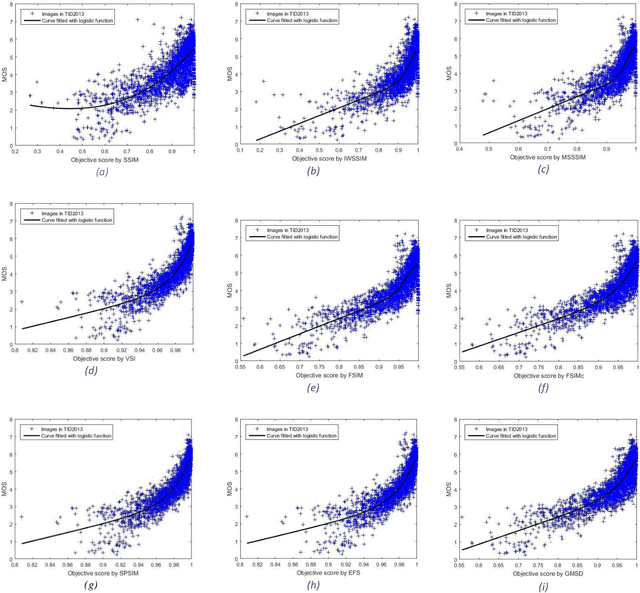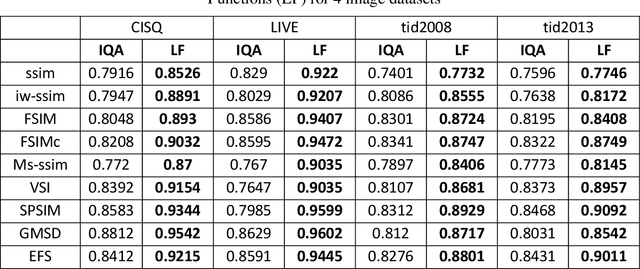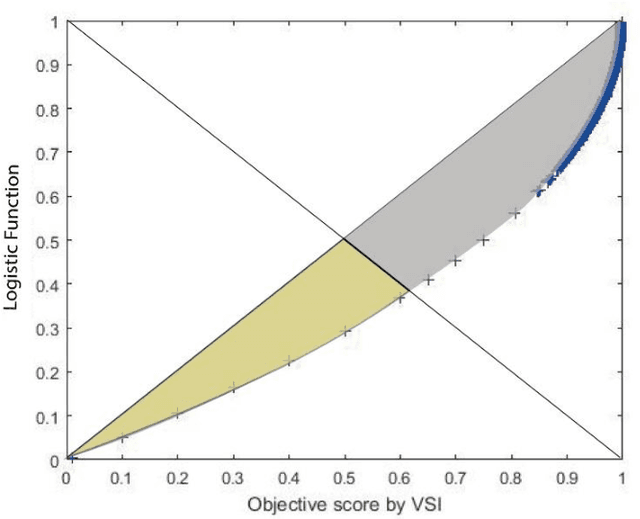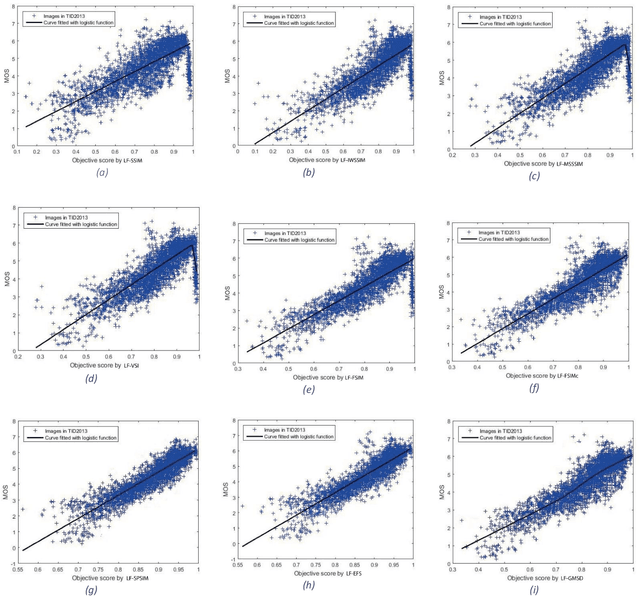Improving precision of objective image/video quality metrics
Paper and Code
Apr 26, 2021



Although subjective tests are most accurate image/video quality assessment tools, they are extremely time demanding. In the past two decades, a variety of objective tools, such as SSIM, IW-SSIM, SPSIM, FSIM, etc., have been devised, that well correlate with the subjective tests results. However, the main problem with these methods is that, they do not discriminate the measured quality well enough, especially at high quality range. In this article we show how the accuracy/precision of these Image Quality Assessment (IQA) meters can be increased by mapping them into a Logistic Function (LF). The precisions are tested over a variety of image/video databases. Our experimental tests indicate while the used high-quality images can be discriminated by 23% resolution on the MOS subjective scores, discrimination resolution by the widely used IQAs are only 2%, but their mapped IQAs to Logistic Function at this quality range can be improved to 9.4%. Moreover, their precision at low to mid quality range can also be improved. At this quality range, while the discrimination resolution of MOS of the tested images is 23.2%, those of raw IQAs is nearly 8.9%, but their adapted logistic functions can lead to 17.7%, very close to that of MOS. Moreover, with the used image databases the Pearson correlation of MOS with the logistic function can be improved by 2%-20.2% as well.
 Add to Chrome
Add to Chrome Add to Firefox
Add to Firefox Add to Edge
Add to Edge